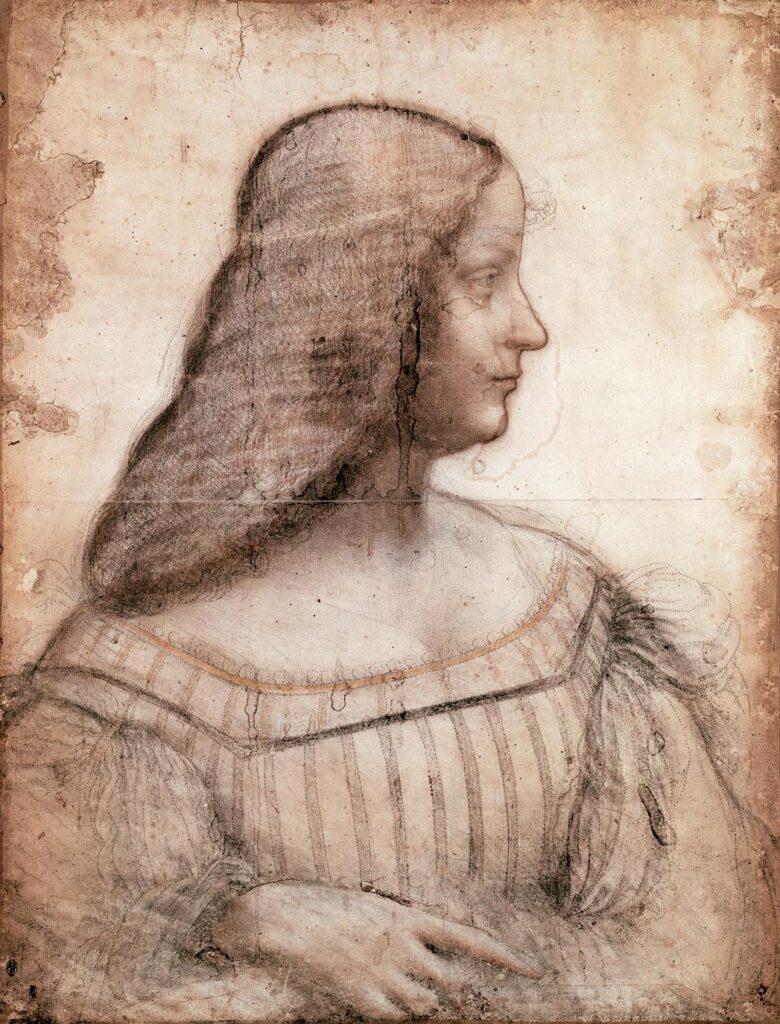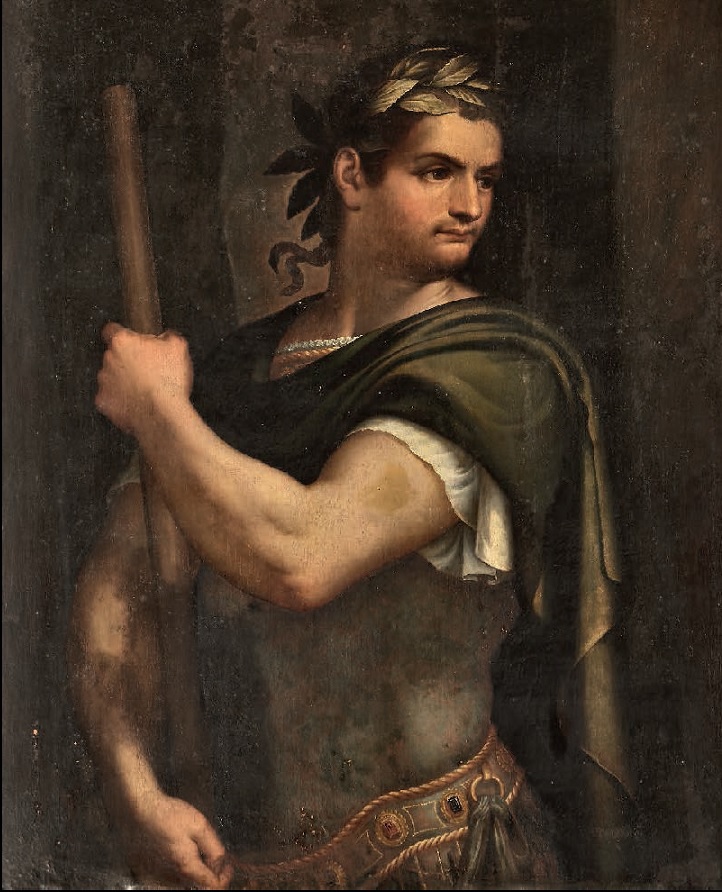Titian’s original series
A brief excerpt from the history of the original emperor paintings by Titian and the relation between the Gonzaga family of Mantua and Leonardo da Vinci and Titian.

Isabella d’Este (1474-1539), Marchioness of Mantua, Italy, had an artistic relationship with Leonardo da Vinci. Beginning in late 1499, Leonardo spent several months with her at the Ducal Palace in Mantua and produced a finished portrait drawing of her. In the years that followed, Isabella wrote to Leonardo to ask him to undertake other paintings and projects. Isabella’s son Federico II Gonzaga (1500-1540), Duke of Mantua, met Leonardo while in Amboise. Isabella d’Este had an artistic relationship with Titian who painted portraits of her in 1529 and 1534-1536 and her son Federico II Gonzaga also had an artistic relationship with Titian who painted portraits of him in 1529 and 1530. In 1536-40 Titian painted for the Duke the original series of eleven half- length portraits of Roman emperors. Historical sources state there were twelve Roman emperor paintings, the twelfth being Domitian (version 1), on display at the Ducal Palace in Mantua in the 16th century.

Version 1, Aegidius Sadeler’s engraving.

Version 2, the drawing of Domitian in Bernardino Campi’s album of drawings of Titian’s emperors in the Archivio Borromeo, Isola Bella, Lake Maggiore, Italy.

Scholars have different opinions as to who painted the twelfth painting Domitian (version.1) in the original series in Mantua. Most scholars suggest Bernardino Campi or Giulio Romano. New research suggests that Campi did not paint the Domitian (version.1) in the original series, his version, version 2, can be found e.g. in the Capodimonte, Naples.
